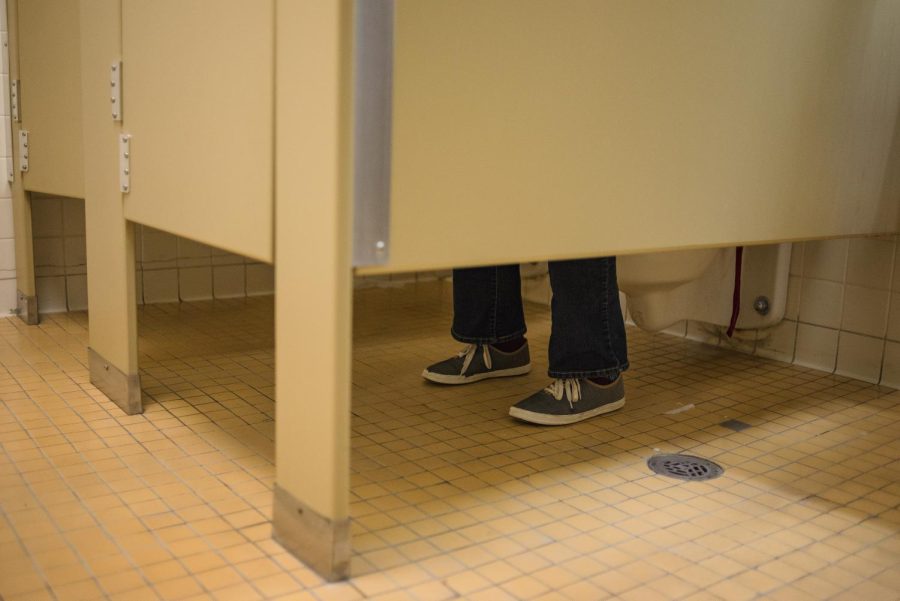We should make all bathrooms on the University of Massachusetts campus gender neutral. Because why should bathrooms be separated by gender in the first place?
Common arguments in favor of separate bathrooms begin with the idea that each gender has different needs, and therefore, gender-specific bathrooms are practical — though this does not hold much water when considering that men and women use the same toilets and showers.
Another rationale is that gender-specific bathrooms are necessary to protect women from creepy men who might try peeping at them while unclothed or, even worse, sexually harass or assault them. But this fear that men use restrooms to harass or assault women — whether by pretending to be transgender women or by using gender-neutral restrooms — was proven false.
For cases where men do sexually harass or assault women in bathrooms, it begs the question: why are we relying on single gender bathrooms to protect women instead of teaching men how to behave properly?
If we must create separate spaces to prevent men from violating women and nonbinary people’s privacy, then that means the real problem is our culture. We should work towards a society where it is unthinkable for anyone, particularly men, to objectify and sexually harass others. Then there’s no longer a need for separate bathrooms to prevent gendered violence.
This flawed logic is intrinsic to oppressive relationships. Rather than put the burden on the perpetrator of the injustice to stop, there is the expectation that the oppressed should simply protect themselves better.
In this way, the logic behind separate bathrooms is not too different from the logic that women would not get sexually harassed as much if they wore more layers or dressed more formally, or that schools should prevent school shootings by arming teachers or, better yet, having fewer doors.
In all these cases, solving the root cause of the oppression requires holding the perpetrators accountable. To do away with gender-based discrimination and violence, we must make sure that people know not to sexually harass others — not only when they are prevented from doing so because of a separate bathroom.
Justifying gendered bathrooms on the grounds that it prevents sexual harassment also wrongly assumes that sexual harassment only happens between people of opposite genders. How does a men-only bathroom prevent a man from sexually harassing another man in that bathroom? Gendered bathrooms do nothing to solve this type of same-gender sexual harassment, even if it is not as common as when it is done by men to women.
An obvious upside of gender-neutral bathrooms is that they make nonbinary and trans people much more comfortable. While there is already a sizable amount of gender-neutral bathrooms on campus, UMass students made it clear that there are not enough for them to be comfortable in their dorms. Many of the bathrooms in dorms are gendered, and thus nonbinary and trans people must traverse down several floors to access a gender-neutral bathroom to shower — if there is such a bathroom — or risk harassment or discrimination if they enter a gendered bathroom.
It’s more convenient to make all bathrooms on campus gender neutral. If every bathroom became available to everyone regardless of gender, we could simply go to the nearest bathroom instead of having to walk up the stairs or to the other side of the floor.
This is particularly the case for residents of the Southwest Residential Area towers, where each floor has one restroom that alternates by gender. I was partially motivated to write this column because there is no men’s bathroom on my dorm’s floor, and it’d be more convenient if the women’s bathroom directly across from me was converted into a gender-neutral bathroom.
What’s more is that due to the inconvenience of being limited to one’s gender-assigned bathroom, people in the Southwest towers and other dorms tend to use the bathroom closest to them regardless of their gender. I know this based on others’ confirmation and from seeing for myself that men and women in my dorm use bathrooms of the opposite gender out of convenience.
At a time when trans and nonbinary Americans face ever-growing discrimination for using the bathrooms that they are most comfortable with, it’s critical to recognize that bathrooms have nothing to do with gender at all and should not be based on such.
Liam Rue can be reached at [email protected].



















